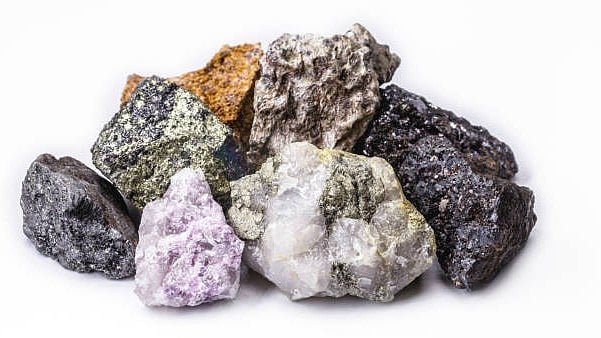
Representative image of minerals.
Credit: iStock
By SALONI SACHDEVA MICHAEL AND KAIRA RAKHEJA
As COP30 draws close, expectations are high that nations will work to translate climate commitments into on-the-ground action. The summit offers an opportunity to confront the material realities of the clean energy transition, including the need to secure critical minerals like lithium, cobalt, nickel, copper, graphite, and rare earth elements.
Minerals have long been part of the energy transition conversation. Growing trade tensions, export restrictions, and the weaponisation of mineral supply chains have brought the subject to the forefront. A handful of countries, including China, Indonesia, South Korea, and Japan, control most of the global refining and processing capacity. China alone controls around 90% of rare earth processing, 70% of global cobalt refining, and over 60% of lithium refining. This dominance is a result of two decades of strategic investment in refining, processing, and manufacturing, while other countries remained dependent on imports. In 2025, China imposed export controls on 12 rare earth elements and tightened restrictions across the lithium-ion battery supply chain, showing how such concentration exposes the energy transition to strategic risks, from price volatility to potential supply chain disruptions.
The scale of the challenge is immense. The International Energy Agency under Stated Policies Scenario estimates that the demand for lithium can grow fivefold by 2040, while the demand for graphite and nickel might double. Meanwhile, the demand for cobalt and rare earth elements is likely to increase 50-60% by 2040. In short, minerals are fast becoming the new oil of the 21st century: vital, contested, and geopolitically charged. Like oil, the challenge is not just scarcity; it is concentration. The extraction of critical minerals is often geographically limited to resource-rich but economically vulnerable regions. This imbalance exposes developing economies to the risks of extractive dependence, while leaving manufacturing nations vulnerable to global supply chain disruptions.
Addressing these risks requires greater diversification and coordinated international engagement. COP30 must embed this agenda, recognising supply chain resilience and equitable access as climate imperatives. Global initiatives such as the Minerals Security Partnership (MSP) and the Quad have begun shaping a new architecture for responsible and resilient critical mineral supply chains. Multilateral partnerships like the India-Australia Critical Minerals Partnership and the US-Japan framework underscore this momentum. Together, they aim to align trade and investment priorities, foster technology transfer, and ensure equitable benefit sharing.
Yet, their success will depend on the readiness of individual nations to meaningfully participate in the global critical mineral value chain. This includes policy coherence, institutional coordination, infrastructure, and human resource development, be it in extraction, processing, manufacturing, or recycling.
The path forward lies in translating global and domestic commitments into practical frameworks that strengthen governance, mobilise resources, and build long-term technological capability.
Road to sustainability
First, countries must move away from past mining models and instead prioritise sustainability and robust environmental, social, and governance standards across the value chain. Tools like AI-based mineral mapping, digital traceability systems, and stronger audit mechanisms can help enhance oversight. Frameworks like the G7 Minerals Action Plan and groupings like the Quad can be leveraged to ensure wider participation in the setting and implementation of global standards.
Second, long-term and targeted financing will be crucial to developing the critical mineral supply chain. Establishing a global clean minerals investment facility could bridge capital and operational expenditure gaps, enable processing and recycling projects beyond traditional monopoly geographies, and mobilise capital alongside development banks and green financing institutions to ensure risk sharing and a steady capital flow.
Third, advancing technology, refining, and recycling will require coordinated leadership from governments, industry, and research institutions. Governments must create enabling policies and funding mechanisms for technology development and skill-building, while industry should invest in modern infrastructure. Universities and research institutes can drive joint R&D and cross-border training in mining, chemical, and process engineering. Partnerships that connect emerging economies like India, Indonesia, and African nations with technology leaders such as Japan and the US can accelerate progress in processing, recycling, and alternative battery chemistries.
COP30 offers a defining moment to turn mineral diplomacy into climate action, ensuring that the race to decarbonise also becomes a race to cooperate, diversify, and build a just and resilient clean energy future.
(Saloni is Energy Specialist, India Clean Energy Transition, and Kaira is Energy Analyst, South Asia, at the Institute for Energy Economics and Financial Analysis [IEEFA])
Disclaimer: The views expressed above are the author's own. They do not necessarily reflect the views of DH.
